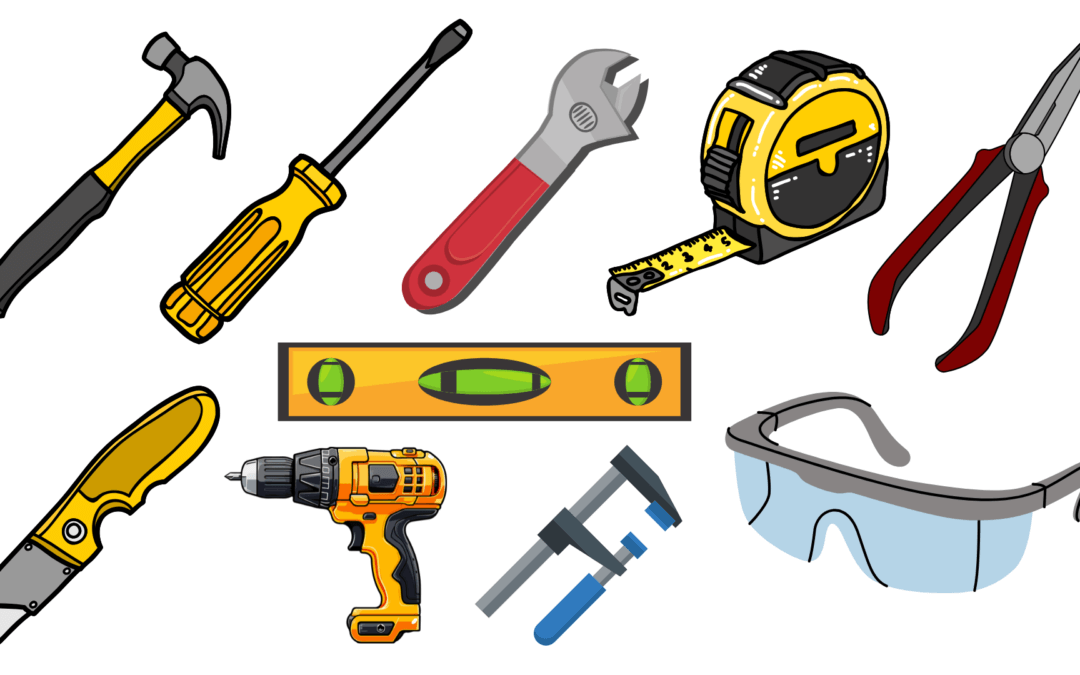Whether you’re just getting into DIY projects, picking up a trade, or simply want to be prepared for everyday repairs, building a solid toolbox is the first step. With the right tools, you can tackle a variety of tasks efficiently and safely. This guide covers the essential tools every beginner should have, along with tips on why they’re important and how to use them effectively.
1. Claw Hammer
A reliable claw hammer is the cornerstone of any toolbox. It’s perfect for driving nails, removing them, and light demolition work.
Why You Need It:
- Essential for hanging pictures, assembling furniture, or building small projects.
- The claw end makes it easy to pull out nails or pry apart boards.
What to Look For:
- A hammer with a comfortable, non-slip grip.
- Opt for a balanced weight—16 ounces is a great choice for beginners.
Explore our Claw Hammer Guide here
2. Screwdriver Set
A versatile screwdriver set includes flathead and Phillips screwdrivers in various sizes.
Why You Need It:
- Useful for tightening loose screws, assembling furniture, or opening electronic devices.
- Flathead drivers can also double as a light-duty prying tool.
What to Look For:
- Magnetic tips for easier screw handling.
- Comfortable, ergonomic handles.
Check out the 6-in-1 Screwdriver for multi-use convenience
3. Adjustable Wrench
An adjustable wrench is essential for gripping and turning nuts, bolts, and other fasteners of various sizes.
Why You Need It:
- Perfect for plumbing repairs, bike maintenance, or assembling metal furniture.
- Eliminates the need for multiple fixed-size wrenches.
What to Look For:
- Smooth, easy-to-adjust jaws.
- A durable, rust-resistant finish.
Learn more about Adjustable Wrenches here
4. Tape Measure
Accurate measurements are the foundation of any successful project, and a tape measure is indispensable for everything from cutting materials to planning layouts.
Why You Need It:
- Ideal for measuring spaces, furniture dimensions, or material cuts.
- Compact and easy to carry.
What to Look For:
- A 25-foot tape is versatile for most projects.
- Locking mechanisms to keep the tape steady.
Discover the best Tape Measures
5. Pliers (Set)
A good set of pliers includes needle-nose, slip-joint, and cutting pliers for gripping, bending, or cutting materials.
Why You Need It:
- Useful for holding small objects, tightening fasteners, or cutting wires.
- Essential for electrical work or crafting.
What to Look For:
- Non-slip grips and rust-resistant finishes.
- Durable cutting edges for wire and cable.
6. Utility Knife
A utility knife is one of the most versatile cutting tools in any toolbox.
Why You Need It:
- Great for opening boxes, cutting drywall, trimming materials, or scoring surfaces.
- Its retractable blade makes it safe to store and transport.
What to Look For:
- A knife with replaceable blades for extended use.
- Comfortable, secure grip for precise cuts.
7. Level (Bubble Level)
A bubble level ensures your work is perfectly straight and aligned.
Why You Need It:
- Essential for hanging shelves, pictures, or installing fixtures.
- Avoids costly mistakes caused by uneven measurements.
What to Look For:
- A durable, lightweight design.
- Clear and easy-to-read bubble vials.
Check out our Bubble Level Overview
8. Power Drill
A power drill is a must-have for any DIYer or trade beginner, offering speed and precision for drilling holes or driving screws.
Why You Need It:
- Speeds up tasks like assembling furniture, hanging drywall, or building outdoor projects.
- Cordless models add portability for outdoor or remote jobs.
What to Look For:
- Variable speed settings for versatility.
- Lithium-ion batteries for cordless options.
Discover the features of a Hammer Drill
9. Adjustable Clamps (Bar Clamps)
Bar clamps or other adjustable clamps are invaluable for holding materials steady while you work.
Why You Need It:
- Keeps materials securely in place for cutting, gluing, or assembling.
- Frees up your hands to focus on precision.
What to Look For:
- Durable materials and easy adjustability.
- Padded jaws to protect delicate surfaces.
Learn about Light-Duty Bar Clamps here
10. Safety Gear (Safety Glasses and Gloves)
No toolbox is complete without safety gear to protect you during projects.
Why You Need It:
- Safety glasses shield your eyes from flying debris.
- Gloves protect your hands from cuts, splinters, and sharp edges.
What to Look For:
- Glasses with anti-fog coatings and impact-resistant lenses.
- Gloves tailored to your specific tasks (e.g., heat-resistant for welding or nitrile for chemical handling).
Check out our Safety Glasses recommendations
Bonus Tips for Beginners
- Start Small: Begin with simple projects to build confidence and get comfortable using your tools.
- Invest in Quality: While budget tools are tempting, investing in quality ensures durability and long-term savings.
- Organize Your Toolbox: A well-organized toolbox saves time and reduces frustration.
Conclusion
Building a beginner’s toolbox doesn’t have to be overwhelming or expensive. By starting with these 10 must-have tools, you’ll be ready to take on a wide range of tasks with confidence. Whether you’re hanging a picture, assembling furniture, or diving into a new DIY project, these essentials will serve as the foundation for your future endeavors.
Explore our tool spotlight pages for detailed reviews and recommendations to help you choose the best tools for your needs. And remember—tools are an investment in your skills and creativity, so choose wisely and enjoy the journey!
